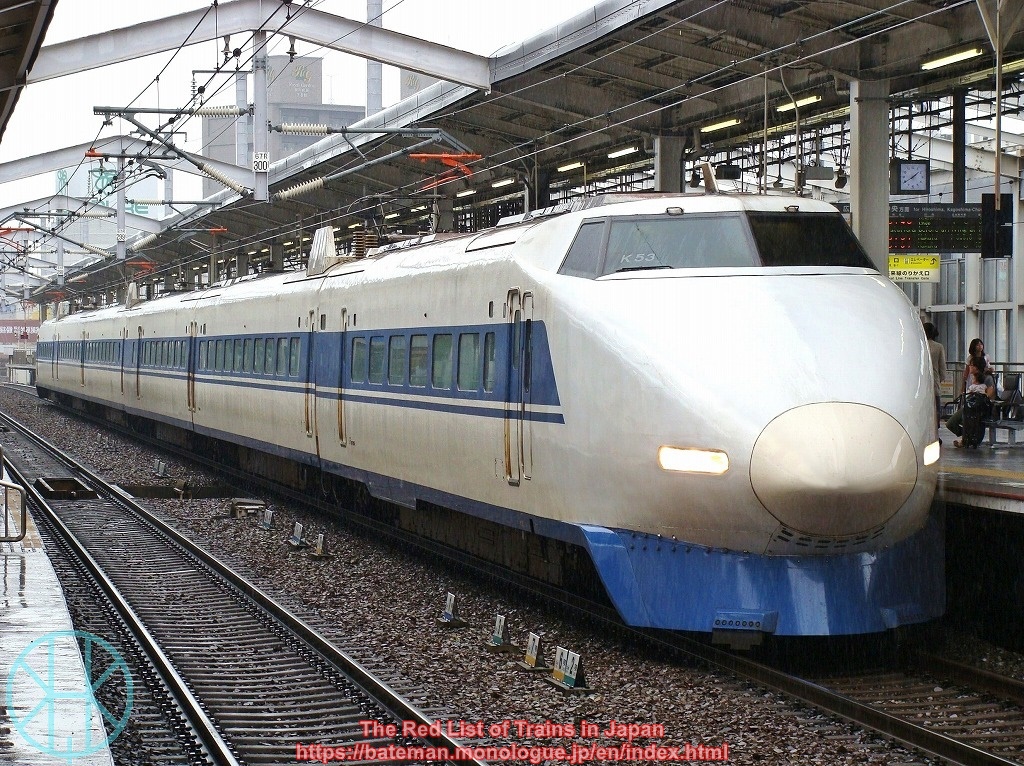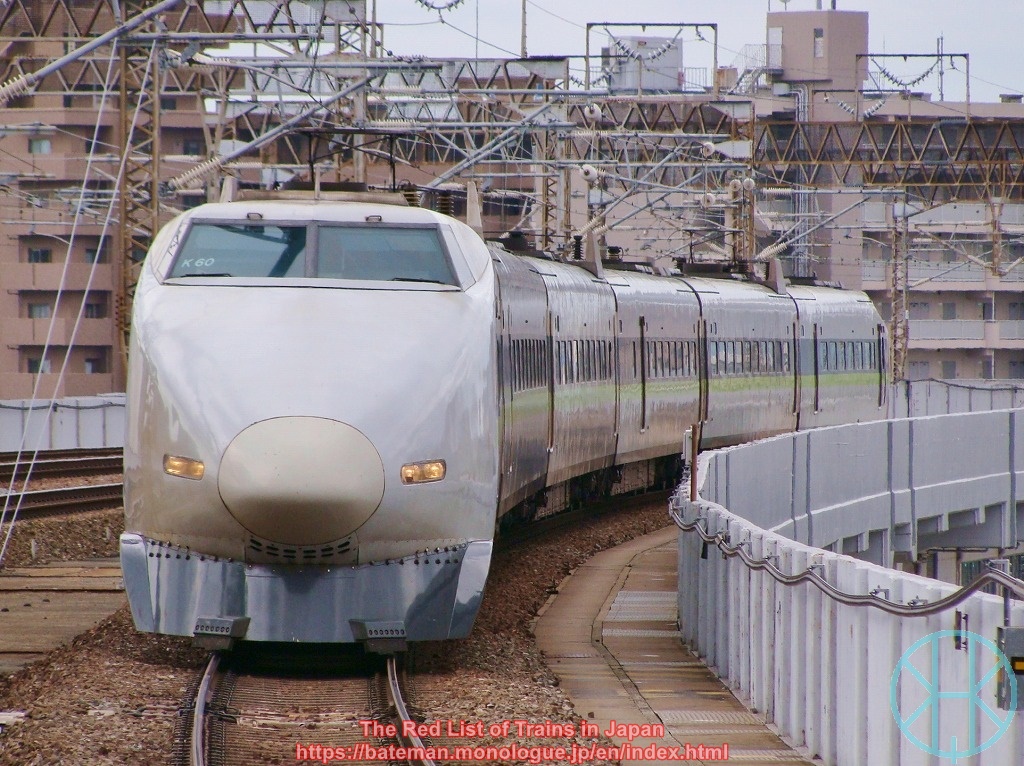100 series Bullet Train

Data (as of 17 Jul 2021)
| Status: | Extinct |
| Constructed in: | 1985-92 |
| Number built: | 1,056 |
| Retired in: | 2012 |
History
The 100 series was the second bullet train type for Tokaido and Sanyo Shinkansen, replacing 0 series. The first high-speed rail in the world had been served by the 0 series for more than 20 years, but Japanese National Railways could not develop a new type until the 1980s because of huge deficit and industrial actions. To make bullet trains more attractive than the 0 series and rivals abroad (i.e. TGV in France), JNR introduced the new train from 1985, just two years before the privatisation.
The 100 series had sharp front end, which was often called "shark nose" style. It also had double-decker intermediate carriages with restaurants and Green Cars (first class). Traction equipment was completely different from the 0 series, but the maximum speed was no faster than the predecessor: just 220 km/h (137 mph). They were formed of 12 or 16 coaches and initially introduced to Hikari (fast) services on both Tokaido and Sanyo Shinkansen.
When JNR was privatised and divided, JR Central succeeded the 100 series, and both JR Central and West companies ordered far more units. In fact, 944 of 1,056 carriages were built after the privatisation. Some of those introduced by JR West were called Grand Hikari (also called 100N series), and they were designed to run at 270 km/h (168 mph). However, it caused so severe noise that they could not run as fast as such in passenger services.
The 100 series had been very popular in the 1990s, but sadly they sharply declined in just 10 years, as even faster Nozomi services were expanded. Faster journeys meant no need of restaurant, resulting closure of dining cars by 2000. As the 100 series was far slower than Nozomi trains (300 series and 700 series) that run at 270 km/h, all 100 series units were withdrawn from Tokaido Shinkansen by 2003, just four years after the withdrawal of the 0 series.
JR West retained some units for a while. It shortened those units to either four or six coaches and refurbished, and reallocated to Kodama stopping services on Sanyo Shinkansen. The old-fashioned bullet trains were simply too slow compared to Nozomi services running at 300 km/h (187 mph) in the western region. Thus, many Kodama services had to wait for 20-30 minutes at stations, to allow faster services to go ahead of. The 100 series was completely withdrawn in March 2012.
Photo

The refurbished units were repainted grey with darker grey and light green bands, which were not popular at all.
(Updated: 17 Jul 2021)
